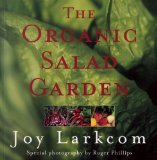

They have a similar flavour and texture to potatoes, for which they are an excellent substitute. They are a useful alternative where the traditional pests and diseases of potatoes -- such as blight and scab -- are a problem. And they can be eaten by those people who might otherwise be allergic to potatoes.
Start the tubers off as you would seed potatoes; chit them (that is, encourage the tubers to sprout) in a cool and light place such as a shed or gararge, keeping them frost-free -- a windowsill is good. If chitting is delayed or is not possible, it is not absolutely vital as their main growth is made after mid-summer. Plant the tubers out when all risk of frost has passed. There is little to be gained by planting very early, and we have found no benefit in early planting under cloche protection. Space about 1 foot apart in rows 2 feet apart, or equidistantly at 18inches. We like to grow them at this latter spacing in deep beds, and they are particularly suited to this method. This spacing might seem excessive compared to the size of the tubers, but the foliage does become quite extensive.
As the plants develop, they soon begin to look like giant Wood Sorrel, to which they are related. It is unnecessary to earth them up as one would potatoes as they do not become poisonous if they turn green, and the density of the foliage tends to blanch any which appear on the surface. The plants are quite neat and tidy in habit. We find that only one weeding is necessary; after then, the foliage becomes so dense that further annual weeds get smothered out. Perennials like Creeping Thistle find their way through, and Bindweed, but then they always do. Some yellow flowers are sometimes produced later in the year, but fruits are rarely set.
To harvest, it is important to wait for as long as possible. You cannot realistically expect tubers until the end of October at the earliest. You might be tempted to inspect the plants for tubers forming in late summer, but usually there is no sign; the tubers seem to grow right at the last minute, when a full canopy of foliage has been built up. A light frost will sometimes harm the tips of the foliage, but leave them a little longer as further growth is often made if milder weather then follows. Only when the leaves have completely turned to mush should you dig them up. Insert a fork near the centre of the plants and lift -- the tubers do not extend out very far. The colourful tubers are very easy to spot, and should be detached from the stout rhizomes. Leave them to dry a little on the soil surface, then store in bags in a cool shed.
To eat, try them raw for maximum crunchiness. In the high Andes, they leave the tubers out to dry in the sun for a few days so that they shrivel slightly. Shrivelling is reported to enhance the sweetness of their flavour, and remove some of the bitterness. For cooking, treat them exactly like potatoes. They have no descernible skin, so don't peel them. They retain some of their crunchiness if they are not overboiled, and their flavour is enhanced if they are baked or roasted for half an hour.

Join "Garden Notes" and plan for Harvest Success as you track and record your gardening progress. Your Free Personal Garden Journal has pages for jotting down notes on the seeds you start, your new plantings, when you fertilized, and even a graph to plot a new garden.
I didn't want to see another internet "eBook" on growing anything, but my husband signed up for Kacper's free report and I have to tell you, it is WELL worth the read. If you think you know everything about growing tomatoes, I challenge you to read Kacper's report. HIGHLY recommended!

Based entirely on organic gardening principles. This says it all. Joy's book has been fully revised and updated and includes extensive new reading, particularly on oriental and fruiting vegetables, and did I mention, is now entirely based on organic gardening practices. Read More...
